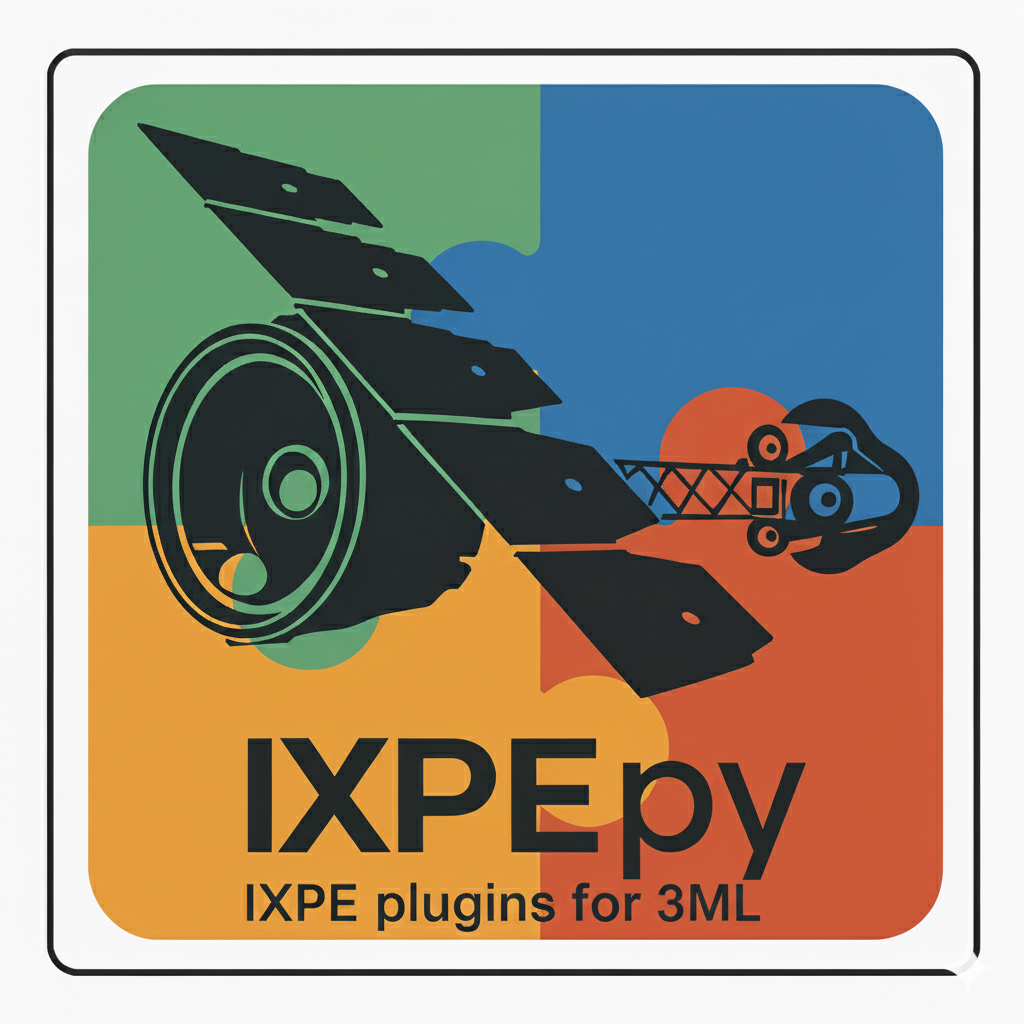
Documentation
This is how it works
Welcome to the documentation page! Here, we provide detailed explanations of how our system works and how you can make the most out of it.
We encourage you to contact us if you encounter any issues while using this tool. Additionally, we welcome your suggestions for new features or improvements to existing functionality. Your input is invaluable to us as we strive to enhance this product. We are eager to hear your ideas and would be delighted to have you join our team to help realize them.
xpqlt stands for "X-ray polarimetry quick look tool". It aims to be an intuitive and efficient interactive web interface through which users can quickly inspect IXPE observations and find basic information about each IXPE-observed source.
- IXPE Data
- The Home Page
- The Analysis Page
- The Joint Observations Page
- The Reference Page
- The Reference Page
- Our To Do List
News!
IXPE meets 3ML! The new IXPE plugin for 3ML, ixpepy , lets you analyze and model IXPE polarization data using the full power of the Multi-Mission Maximum Likelihood (3ML) framework. Simplify cross-mission analysis — now including polarimetry!

Updates and Versions
- Source list updated to Dec 18 2025.
- The IXPE data are processed with ixpeobssim version 31.0.2
Attention: The IXPE observations missing the DU2 level2 files are currently not processed here (see Known IXPE Analysis Issues for more information). We will process those observations once the files will be made available.
Recommendations
We recommend using Chrome or Safari as browsers when using xpqlt, as some other browsers (e.g., Firefox) has shown lags for the interactive display of several features.
IXPE Data
The IXPE Level 2 data files (along with any provided readme file) are downloaded from the IXPE Catalog hosted by NASA's HEASARC archive every two weeks and the database is updated with the new processed observations. The list of available targets and observations can be found in the table on the Home page.
The Home Page
The Home page shows the available targets organized in "cards", each one representing a different type of object. The user can go to the category of interest and select the target from the dropdown menu. This action will activate the buttons "Quick look Data" and "Joint Obs" , which will bring the user to different pages that we decribe in the next sections.
Underneath the source cards, the IXPE observed targets are displayed on a sky map, color coded by type. The map offers different fun visualization options that we invite the user to explore. The observed targets on the sky map are automatically updated when a new query is made for the table undrneath.
The observations table lists all the publicly available ixpe observations. The order is by default set to be alphabetical by source name, but it can be changed by clicking on the arrows next to the column names.
The Analysis page
This is the beating heart of xpqlt. This quick look tool allows the user to quickly check the polarization in IXPE data in custom-selected regions of the field of view and custom-defined energy bins.
What the User Sees
On the top of the analysis page the main parameters of the user-selected source are displayed. This includes the source type, coordinates and the average polarization and MDP for the selected observation (several sources have multiple IXPE observations). The user can switch source and/or obsid through the dropdown menus on the top-right of the page.
The average polarization displayed there is computed for each source following these steps:
- 1: If a correction is needed (according to a readme file available at the download), such correction is done on the level 2 event data.
- 2: The data are selected using xpselect routine of ixpeobssim. If the source is point-like, we fit the image with a 2D gaussian template to extract the exact position of the center of the source, and then we select a circular region of radius 120 arcsecs. If the source is extended the center is assumed to be the one indicated by the HEADER of the fits files and the radius of the circular region is set to 4.5 arcmins.
- 3: Extract the polarization parameters (MDP, PD, PA, Q/I, U/I) using xpbin-PCUBE routine of ixpeobssim.
The map on the left loads the count map of the source generated with xpbin-CMAP routine of ixpeobssim. Here the user can select different regions of the sky and xpqlt will compute the corresponding average polarization for each of them and display the parameters below, in the "Polarization Results". In this window, the user can select up to 6 different energy bins for which the polarization parameters will be computed independently and displayed in the Q/I-U/I chart on the right.
On the right of the counts map, we show the average I, Q and U spectra extracted with xpbin-PHA1/PHA1Q/PHA1U routines of ixpeobssim for the selected region (see details of the selection above). At this moment it's not possible to extract the spectra for the user-selected regions, but the team is working on developing this functionality.
On the right of the spectra, the average polarization for the selected region (see details of the selection above) is displayed in the usual Q/I-U/I chart.
Caveat: The current implementation of the data cube does not correct for the effect of the polarization leakage (N. Bucciantini et al. 2023). This affects the spatially resolved analysis of extended sources.
What is Behind the Scene
xpqlt heavily relies on ixpeobssim (L. Baldini et al. 2023) to generate the data products used behind the scene. When the user selects a region in the displayed counts map and a particular energy range, xpqlt selects a number of "voxels" form a 3D polarization map cube which is stored as an SQL database on our servers.
The map cubes are generated for each IXPE observation using the xpbin routine of ixpeobssim:
ENERGY_BINNING = list(np.linspace(2., 8., 51))
NPIX = 800
pipeline.xpbin(
*file_list,
algorithm='PMAPCUBE',
npix=NPIX,
ebinalg='LIST',
ebinning=ENERGY_BINNING,
overwrite=True,
irfname=DEFAULT_IRF_NAME)
Due to the nature of the Stokes parameters, determining the total polarization in a given energy bin and sky region involves summing together the Stokes parameters of the selected voxels of the polarization map cube. The modulation factor for the selected voxels is derived as the average modulation factor of the non-zero count voxels.
The Joint Observaitons Page
The Joint Observation Page provides an updated list of observations conducted by multiple X-ray telescopes besides IXPE. In particular, we regularly collect the list of publicly available observations by NuStar, NICER, Chandra, XMM-Newton, and Swift-XRT for each target observed by IXPE. This page serves as a comprehensive resource for researchers interested in studying X-ray sources with multiple X-ray missions.
For each instrument, a separate table is displayed, detailing the Observation ID (Obsid), Modified Julian Date (MJD) of the start of the observations, exposure duration, as well as the closest IXPE Obsid, and the delay in days from the corresponding IXPE observation. This information enables users to identify simultaneous or near-simultaneous observations across different X-ray missions.
The References Page
The References Page compiles all available resources mentioning "IXPE" either in the title or in the abstract. We gather this information from the public ArXiv repository without distinction between peer-reviewed or non-peer-reviewed publications. This inclusive approach ensures that proceedings and conference contributions are also listed in the table. The table features a query function enabling users to search for specific strings such as source names or author names. As the user types, the table dynamically updates to display relevant entries. We will periodically update the list pulling the most recent publications from the ArXiv.
On Our To Do List:
(Listed in random order)
- Enable weighted analysis (see A. Di Marco et al. 2022).
- Implement a polarization leakage correction (see N. Bucciantini et al. 2023).
- Implement background rejection (see A. Di Marco et al. 2023).
- Enable background selection and subtraction.
- Generate downloadable pha files for the user-selected regions.
- Allow visualization of pulse profiles for periodic sources.
- Allow polarization extraction in phase bins.
- Separate the on-pulse from off-pulse emission for PWNs.
Our Mission
We want to facilitate the use and interpretation of high-energy polarimetry data!
We will work for and with the community to always improve our tools to meet the needs.
Acknowledgemnts
A special thank you to the IXPE Team for the enthusiastic support and insightful suggestions.
We acknowlege the support of the NASA's ADAP program under award number 80NSSC23K0492.
How to cite
Please refer to this ADS entry.
Thank you for using xpqlt! We acknowlege the support of the NASA's ADAP program under award number 80NSSC23K0492. |
Last updated Feb 2024